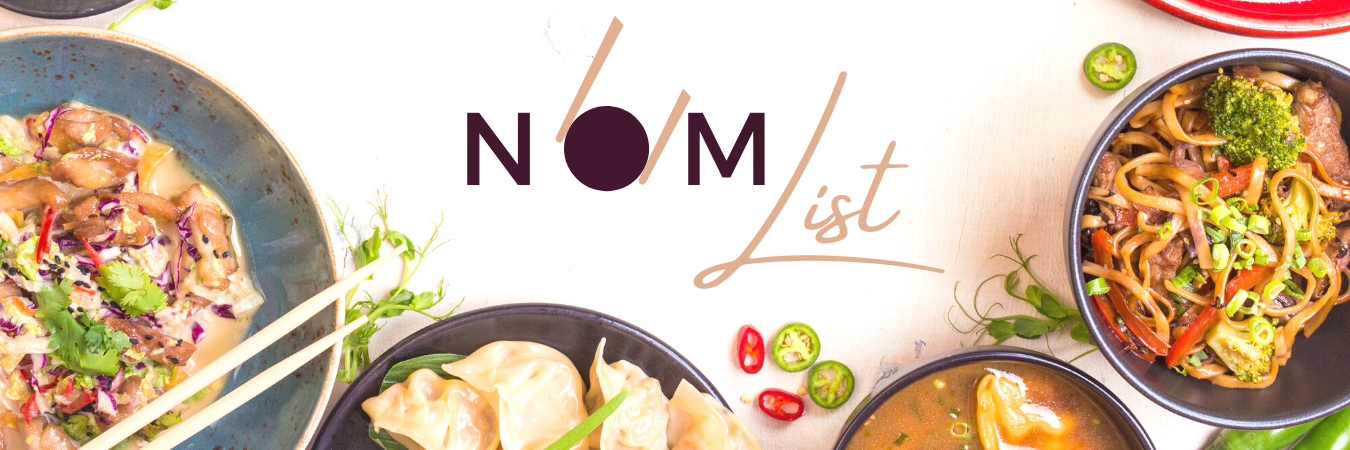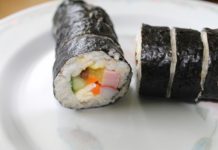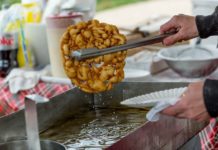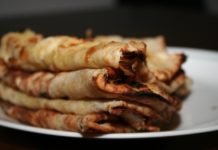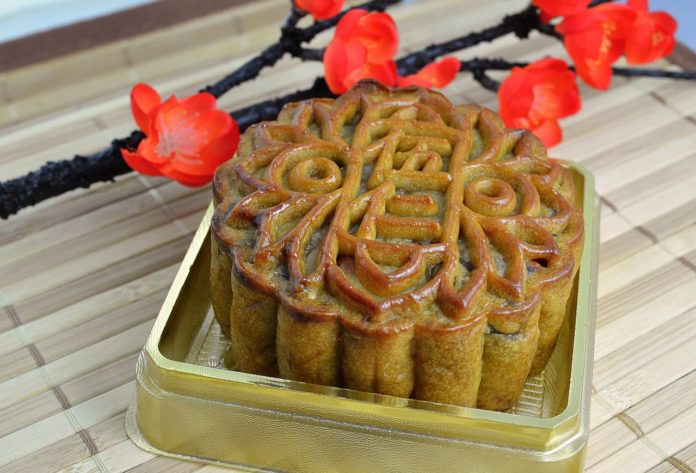
You know how Christmas just isn’t Christmas without eggnog and gingerbread men or candy canes? Well, the Vietnamese mooncake is something kind of like that except that it is eaten during Mid-Autumn Festival – a celebration of the moon. Like America’s favorite holidays, there are festivals and family get-togethers during Mid-Autumn along with lots and lots of mooncakes being passed around.
So why celebrate the moon? Actually this tradition is quite ancient dating back thousands of years. Like many cultures around the globe, the festival coincides with the changing seasons. For instance, there is a similar festival season in the spring where you celebrate the sun instead of the moon.
Mooncakes over the centuries have become so connected to Mid-Autumn Festival that you’ll often hear it called Mooncake Festival. And although it coincides with summer in the U.S., Mid-Autumn falls on the middle of the month in August – the “Night of the Moon” as that day is called.
You may be asking, ‘What’s so great about mooncakes that they have become the centerpiece of Mid-Autumn Festival and if it’s Chinese, how are Vietnamese mooncakes different?’ We’re going to answer those questions and many more in our ultimate guide to Vietnamese Mooncake!
What is Vietnamese Mooncake
First of all, you can probably guess by the name that a mooncake, even if this is the first time you’ve ever heard of it, is probably shaped like the moon, and you’d be right! It’s a type of pastry that’s about an inch thick and four inches around – like a big thick cookie. But unlike the types of pastries you may be thinking of, these are filled with either lotus seed or red beans…don’t sound too pastry-like does it?
Believe it or not, it is a sweet treat! Here’s another strange combo; the filling in addition to being made of beans or seed paste is wrapped around a salty egg yolk. A really cool feature of mooncakes is the different emblems and sayings that are “printed” on them.
Okay, well maybe not printed, it’s not like you put ink on these pastries. But you are supposed to etch or draw or dye different shapes, animals, or Chinese characters on top of each mooncake as decoration. Back in the day, they would either have a picture of the moon goddess of immortality, Chang’e, or the word longevity spelled out in Chinese characters.
Unlike in the past, there is usually no animal sacrifice by some Chinese emperor during Mid-Autumn Festival but animals are still represented. You’ll find mooncakes with rabbits imprinted on them or flowers – things that were once used as sacrifices to the moon. Although they began as a holiday treat, today in many Asian countries, you’ll find mooncakes served year round with a cup of tea.
History of Vietnamese Mooncake
As old as the tradition of Mid-Autumn Festivals is, mooncakes only became a part of it during the reign of the Yuan Dynasty beginning back in 1368 – over four thousand years after Mid-Autumn Festival began. And it was mooncakes folks say that toppled the Yuan Dynasty aiding Ming revolutionaries. How did a pastry do all of that? The messages imprinted on them!
Seriously! Before the Ming Dynasty took over China in the late 1300s, China under Mongol rule was very closed off from the rest of the world. An oppressive ruler created the seeds for an uprising among the poor people. It is said that messages imprinted on mooncakes and given as gifts were used to secretly tell the people when to begin the impeding revolt; the date when everyone was to rise up and kill their rulers – on the day of the autumn equinox.
The trick was two-fold: the messages flew under the radar of suspicion since mooncakes are a traditional Mid-Autumn Festival treat, and, after the message was received, the recipient was able to destroy the evidence by simply eating it—pretty brilliant!
Mooncakes Spread to Vietnam
The success of that secret coup by mooncake spread like wildfire throughout Asia, including to Vietnam. Naturally each nation puts its own unique spin on this ancient pastry. Traditional Vietnamese mooncakes, for example, are made in both the shape of the moon (a circle) and in squares which symbolize Earth.
Also, the types of messages, characters, and decorations imprinted on mooncakes differ from location to location. A typical Vietnamese mooncake communicates a message of happiness or beauty with a floral design. However, modern mooncakes have taken on more commercial appeal.
You can find mooncakes shaped like animals for kids or buy them from stores prepackaged in fancy gift boxes. The messages and shapes aren’t the only things that are different; Vietnamese mooncakes are made a little differently too and it starts with the crust.
Vietnamese Mooncake Crusts
Ever since the cat got out of the bag and mooncakes began to spread outside of China, they have changed and evolved. You’ll find them made quite differently in many places in Asia than the traditional Chinese mooncakes of yester year.
One way to discern where your mooncake originated from is by the crust. In most places there is only one way to make the crust but in China, there are three different types of mooncake crusts and in Vietnam, there are two.
In China, your mooncake crust will either be chewy, flaky, or doughy like a tart. Chewy crusts are the most popular style of mooncakes outside of Asia. They are infused with syrup to make them chewy. Mooncakes in Taiwan use flaky crusts and in most parts of China you’ll find the doughy kind similar to pie crust.
“Sticky Rice” Crust vs. Baked Crust
Vietnamese mooncakes break down into two different types of crusts and they are only found during Mid-Autumn Festival. The “sticky rice” version is called Bánh dẻo in Vietnamese and is made using rice flour. On the other hand the baked version called "Bánh nướng" uses wheat flour to make the dough which is thinner than the sticky version and is infused with syrup.
When cooked, Bánh dẻo is white and moist. A lot of times food dye is added to give them more color or the filling adds color to it. Bánh nướng turns brown when baked because of the syrup in it. But what really makes a mooncake the bomb is what you stuff it with. There are all kinds of different types of fillings you can use in Vietnamese mooncakes.
Different Types of Fillings
You’ll find that although they are filled with salty egg yolks and sausage, they are actually quite sweet. The fillings are salty to cut the sweetness. In fact, you can either make a totally sweet version or one that his half sweet and half salty.
Mung bean paste, jujube paste, and lotus seed paste are all sweet tasting even though they don’t sound like it. A traditional Vietnamese mooncake is filled with either mung bean or lotus seed paste. But you can fill it with other things like coconut, chocolate, black beans, or taro paste among other things. That’s for the sweet filling.
For a mix of sweet and salty, mooncakes are filled with different types of seeds and nuts. The mixed version will usually include three different types of nuts (almonds, peanuts, and walnuts) plus three different types of seeds (pumpkin, sesame, and watermelon).
Of course it’s a matter of taste so you can swap out almonds for cashews for example or just toss them both in the middle. Nowadays the fillings have grown to include damn near anything from cream cheese and coffee to sweet potatoes and green tea.
Vietnamese Mooncake Types
Modern Vietnamese mooncakes have evolved to the point where you’ll now find specialty mooncakes. We found several that go by different names based on the types of filling and crust they use:
Fresh Fruit Mooncake
As the name implies, Fresh Fruit Mooncake is made using fresh fruit. Actually it is made using fruit jelly. While kiwi and passion fruit are among the standard fruit jellies used in a fresh fruit mooncake, you can technically fill it with any kind of fruit you like.
Ice Cream Mooncake
One of the newest versions of mooncake was invented by the famous ice cream makers at Häagen-Dazs. The new Ice Cream Mooncake is filled with ice cream and the crust is made of either milk chocolate, dark chocolate, or white chocolate—yum!
Jelly Mooncake
Are you thinking, ‘What’s the difference between fresh fruit mooncake and jelly mooncake?’ It’s the crust! In this version, the crust itself is made out of jelly! Because of that, they are often quite colorful.
Salty Mooncake
Traditional Vietnamese mooncakes can be all sweet or half and half. Now there is a salty version called the Salty Mooncake. This cutie is filled with salty eggs, chicken, sausage, or other kinds of meats. The crust still adds a bit of sweetness to the mix though.
Snowskin Mooncake
The Snowy Mooncake is only about 40 years old and is not baked at all. It is actually served cold – hence the name. Using rice flour, the crust is a lot like mochi. It is also made using a jelly crust.
Veggie Mooncake
Traditional mooncakes are baked using lard which is a no-no for vegetarians. That has led to the advent of a vegetarian mooncake filled with lotus seeds and green beans.
Over here in the western hemisphere, we’ve really Americanized mooncakes. You’ll find some versions filled with liquor like whisky and champagne or super fancy ones filled with caviar or foie gras. When you think about it, it makes sense too. Way back in the day Mid-Autumn Festival was a holiday for the rich and well connected – champagne and caviar just scream rich and well connected!
How to Make Vietnamese Mooncake
Simple, traditional Vietnamese mooncakes are not very hard to make. The first thing you have to decide is what kind of crust you are going to make: Bánh dẻo or Bánh nướng. We’re going to go with the basic Vietnamese mooncake recipe. If you want to take it up a notch, we recommend checking out this site with the top 10 Vietnamese mooncake recipes.
To make Bánh nướng or baked mooncake, you’re going to need some oil, egg, wheat flour, baking soda, syrup, and malt. You’re going to boil the syrup and malt together before adding it to the flour, egg, and baking soda. Mix the dough until it is doughy. If it’s sticky, you may have to add more flour or baking soda.
Next you cover the dough in Saran wrap and let it sit for about a half an hour. While that is going on, you have to get your mold ready, usually moon shaped circles or squares. You want half as much filling as dough for each mooncake. A typical ratio is 25 grams of dough wrapped around 50 grams of filling. You can adjust those proportions based on your taste (whether you want a thicker crust or more filling).
Here’s where you stuff it. You’ll want to flatten out your dough, and then cut out 10 centimeter circles or squares. Then place your ingredients in the middle of each one. We’ve given you all kinds of things to fill it with so take your pick. Once you have dallopped your crusts with filling, carefully turn each one into a ball, making sure not to squeeze any of the filling out or create any cracks in the dough.
This part can be a bit tricky. You have to very gently press the ball into your mold, again, without squishing the filling out. If you are using a mooncake mold, make sure to press it into the decorative design so that it shows up when it’s baked.
You’re going to need to make egg wash to brush onto the mooncakes. This is a simple egg beaten together with either milk or water. You can use the yolk only, the whites only, or the whole egg. With the mooncakes still in the molds, take a brush and wipe each one down with the egg wash.
Coat a cookie sheet with oil or lard and tap the molds to pop the mooncakes out and onto the baking sheet. Finally you slide them into the oven and cook for 10 minutes, et voila – you have your own Vietnamese mooncake!
